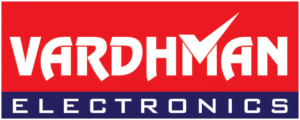Bypass Charging Breakthrough: Extending Smartphone Battery Life

Smartphone batteries undergo a limited number of charge and discharge cycles in their lifespan. The more frequently you use your phone, the quicker it undergoes these cycles, necessitating more frequent charging. This repetitive process gradually diminishes the battery's chemical integrity, leading to reduced performance and a diminished capacity to retain charge.
Bypass charging addresses this issue by minimizing the frequency of charge-discharge cycles. This method is particularly beneficial for devices used intensively, such as gaming smartphones prone to prolonged heat exposure. By implementing bypass charging, manufacturers aim to prolong the battery's longevity and sustain its optimal performance over time.
Understanding Bypass Charging
Bypass charging is a feature found in high-performance laptops and select smartphones like those in the Asus ROG and Samsung Galaxy S series. Normally, when you use your phone or laptop while connected to AC power, the device draws power from both the charger and the battery simultaneously. However, in bypass charging mode, the device draws power directly from the charger, bypassing the battery altogether.

This method significantly reduces the strain on the battery compared to traditional charging cycles where the battery is constantly being drained and recharged. As a result, bypass charging helps minimize battery wear and tear, thereby extending its lifespan. Moreover, by operating directly off AC power, it also reduces heat generation, which can enhance overall device performance, especially beneficial for gaming laptops that require sustained high power output.
In essence, bypass charging not only preserves battery health but also optimizes device performance by leveraging direct AC power consumption, making it a preferred option for users seeking to maximize both longevity and efficiency.
Bypass Charging vs. Trickle Charging: Benefits and Differences Explained
Bypass charging and trickle charging are two distinct methods of managing battery power in devices like smartphones and laptops. Trickle charging involves continuously supplying a small amount of current to a battery while it is being used or is in standby mode. This method is typically used to keep the battery topped off, especially when a device is left charging overnight. However, even though trickle charging is at a lower power level than regular charging, it still contributes to wear and tear on the battery over time.

Bypass charging provides an alternative approach by allowing a device to draw power directly from the charger rather than the battery itself. In this mode, the battery is bypassed, hence the name. By operating off AC power, bypass charging reduces the frequency of charge-discharge cycles that contribute to battery degradation. This significantly extends the battery's lifespan and helps maintain its capacity to hold a charge over time.
Trickle charging, while convenient for ensuring a fully charged battery, can lead to degradation over prolonged periods. Leaving a device plugged in for extended periods, such as overnight, can contribute to this wear and tear, affecting battery longevity. In contrast, bypass charging eliminates these concerns by minimizing the battery's involvement in day-to-day power supply. This not only reduces wear but also lowers heat generation, which can improve overall device performance, particularly in high-demand scenarios like gaming or intensive computing tasks.
In conclusion, while both trickle charging and bypass charging aim to maintain battery life and performance, they do so through different methods and with varying impacts on battery health. Trickle charging is suitable for ensuring immediate availability of a fully charged battery but may contribute to long-term wear. Bypass charging, on the other hand, prioritizes battery longevity by reducing stress on the battery during use. Understanding these differences allows users to choose the charging method that best suits their device usage patterns and long-term battery health goals.
Do You Need Bypass Charging for Your Phone?
Bypass charging is particularly beneficial when your phone usage demands sustained power without interruption. For instance, avid gamers who require extended play sessions can benefit greatly from bypass charging. By drawing power directly from the charger rather than the battery, bypass charging reduces the strain on the battery during intense gaming sessions, thereby prolonging its lifespan and ensuring optimal performance throughout.

Moreover, professionals who participate in lengthy meetings daily can also benefit from bypass charging. Meetings often involve continuous use of features like cameras, data-intensive communication over wireless networks, and active noise cancellation. By utilizing bypass charging, these users can operate their phones directly from AC power, minimizing battery usage and preserving its capacity for other tasks throughout the day.
Related Posts
Smartphone Charging Hacks: Quick and Easy Ways to Boost Your Battery Life Instantly
-
Posted by
Vardhman
Smartphone Charging

